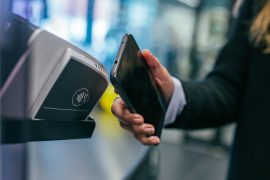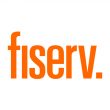The year ahead: Enhanced digitisation and the evolution of payments
Buyers of goods and services have slowly migrated from manual processes and legacy value exchange as they shop, pay bills, make reservations and transition to digital, automated and efficient commerce.

The payments landscape will see a lot of developments in 2022
During the pandemic—when brick-and-mortars shut their doors and consumers flocked to the internet and their mobile devices for basic services—the digitisation of commerce and specifically the payments industry went into overdrive, making a half-decade of progress in a year’s time.
In 2021, consumers and buyers of all forms enjoyed, and in some cases were forced into, more flexibility when it came to where they purchased goods and services and how they paid for them.
We will see more businesses opening their doors for in-person transactions in 2022. But this doesn’t mean they will gravitate 100% back toward analog or limited digital payment systems.
Consumers and business buyers have grown used to shopping and buying what they want, where they want and how they want. Sellers want to scale and drive efficiencies leveraging commerce platforms in numerous mediums to meet buyers’ multidimensional needs. These are horses that won’t go back in the barn.
In fact, they will race towards the finish line even faster as the year ahead will bring even more digitisation to the payments landscape as multi-channel commerce prevails. We are starting the next leg of the race.
Here are five predictions for how payments will continue to evolve in 2022:
Software makes commerce invisible
Twenty years ago, no one could imagine hailing a ride across town without making a phone call, giving directions or even taking out your wallet. But Uber made this improbable scenario a reality. And it’s a reality we all love.
The key to this frictionless experience is simple software with an amazing UX. Buyers and sellers are leveraging software, digital marketplaces and modern mobile and cloud payment solutions all the time. Increasingly, they expect to be able to conduct commerce and financial transactions wherever they roam.
The experience they have with Uber—where payments are all but invisible—will find its way into more emerging industries and use cases in 2022 as payments just “happen”, driving efficient and effective commerce.
Open ecosystems emerge as winners
Fintech enablers that only allow their marketplace sellers and software platforms to operate in a single model or medium and offer limited options are going to fall behind in the digitisation race of 2022.
Similarly, software platforms that only drive their marketplace sellers to operate in a single model or in a certain fashion are just as limiting. Software platforms need options to support consumers and business needs in order to drive adoption and serve all markets. A myriad of customer journeys will become the norm.
Open and solution-based partners/ecosystems allowing various journeys focused on client experience, optionality and adoption will pull ahead. Software companies and marketplaces have countless business types they now serve. Open ecosystems are what enable them to do that, and that’s the reason they will win in 2022.
A new mix of payment methods
Recent research from PricewaterhouseCoopers estimates that cashless payment volumes will grow exponentially over the next four years, reaching $1.9 trillion by 2025. But it isn’t just about the migration out of cash and checks – it is about the numerous alternative payment methods that create “choice” at checkout.
Many of these new tenders allow for increased purchasing power, a benefit for buyer and seller. They also allow easier or more secure commerce and even increased rewards or value.
Many businesses in the US ask that the customer tap on a sales terminal or pay on their phone via biometrics. New alternative payment tenders are evolving quickly, including BNPL options – one of the hottest categories of 2021.
Not all retailers will accept crypto payments, but some will – especially those with buyers that prefer crypto tenders. Leaders will allow their sellers to present the payment tenders buyers demand.
The fintech assault
If you operate a small or medium-sized business, the bank used to be your go-to for all things related to commerce. Those days are long over. Financial technology companies have been offering financial services in new and different ways, and the year ahead will feature even more innovation. Banking services of all types are being offered outside of traditional banking channels.
Traditional banks have their work cut out for them as the assault from the fintechs won’t ease up in 2022: the industry must prepare for battle and reimagine what deposits, lending and even account balances look like in the years ahead.
How can banks and other legacy institutions participate in new economies and stay competitive leveraging partnerships and their cost of capital? The “point of banking” will shift even faster away from legacy financial institutions unless the banks can move quickly into the world of experience and meet businesses and consumers where they are looking for services.
M&A frenzy
Mergers and acquisitions have been on the upswing in the payments industry. This became especially noticeable in 2020, when a series of “megadeals” made headlines.
In 2021, we saw a flurry of new public companies bragging about a future of growth. Entering the new year, interest rates, while rising, remain low and many incumbents will need to expand capabilities and market reach to continue to grow.
At the same time, fintech venture and equity firms are sitting on more cash than any other time in history that they will be pressured to deploy. With so much complexity and so many moving pieces in commerce today, we can expect to see much of that investment capital – both public and private – used to help organisations join forces to stay ahead of the game.
Looking ahead
The payments landscape will see a lot of action in 2022, with software making commerce increasingly invisible in a range of industries, new forms of tender growing in prominence, open ecosystems gaining even more of a competitive edge, more regulations coming, more growth of fintech companies, mergers between solution providers and top players and more optionality being created when it comes to how, where and when consumers pay for the goods and services they want.
Companies across the spectrum will continue the race to serve customers who expect no friction, no learning curve and virtually unlimited choice.
The winners in 2022 will be the companies who not only give buyers and sellers the options they demand, but make these choices intuitive and easy for them.











































